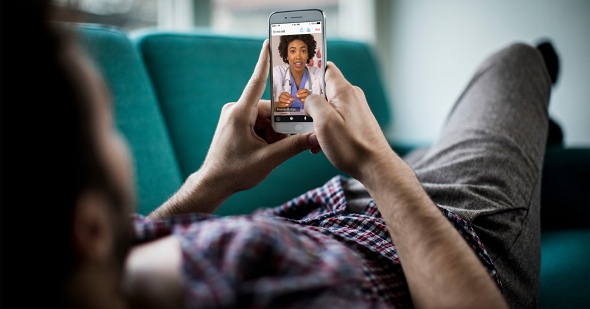
@ShahidNShah


St. Luke's University Health Network realized it needed technology that could help expand care across its 14 hospitals throughout Eastern Pennsylvania and Western New Jersey spanning both urban and rural areas. It also wanted to expand access to care whenever patients needed it, which St. Luke's knew would require additional clinical coverage. The provider organization realized through virtual care it could enable its clinicians to see patients much faster. As St. Luke's, like many other healthcare organizations, saw an uptick in mental health patients during the pandemic, it knew it needed to act fast to meet their needs and be able to ensure continuity of care for patients – even for those who contracted COVID-19 – while keeping the organization's providers and employees safe. "Further on the employee side, we saw an opportunity to leverage technology to help with the self-care of our employees and their families," said Amie Allanson-Dundon, network director of clinical therapy services, St. Luke's University Health Network. "We know healthcare workers have higher rates of stress and anxiety, and in looking at how much our employees leveraged our St. Luke's services, we saw a need to improve their access to quality mental healthcare." "We felt the company offered a consistent solution that could support the various virtual care needs across St. Luke's, with strong results promised through effective and sustainable usage. For the employee program, St. Luke's studied 12 different platforms and was impressed with how SilverCloud could meet its needs. St. Luke's always had wanted to leverage virtual care for psychiatric services but was restricted by regulatory and reimbursement issues. Because it anticipated issues with WiFi reliability and technology resistance, St. Luke's formalized a Virtual Care Operations and IT Team that was available to provide support to patients and answer questions 24/7. "If patient acuity exceeded the program's capability, the patient was referred to an Employee Assistance Program or a St. Luke's therapist or otherwise, as necessary," she continued. By implementing the telehealth model, one of St. Luke's biggest questions was how to ensure the program would work while meeting unique needs, both from a staff and patient perspective. The "#StLukeStrong" program provided consistent, valuable mental health support to St. Luke's frontline workers throughout every stage of the pandemic, Allanson-Dundon reported. "For us at St. Luke's, it was important that we not only took care of the mental health of our patients but also our employees," she said.
Continue reading at healthcareitnews.com
SEOUL, South Korea, July 4, 2022 /PRNewswire/ -- Lunit, a leading medical AI provider, announced that it has signed a contract with FujiFilm Thailand and Microsoft to supply AI cancer screening …
Posted Jul 6, 2022 Artificial Intelligence Cancer
Connecting innovation decision makers to authoritative information, institutions, people and insights.
Medigy accurately delivers healthcare and technology information, news and insight from around the world.
Medigy surfaces the world's best crowdsourced health tech offerings with social interactions and peer reviews.
© 2025 Netspective Foundation, Inc. All Rights Reserved.
Built on Jul 14, 2025 at 2:07pm